Enhancing listening and spoken skills in Spanish connected speech for Anglophones
Native speech is directed towards native listeners, not designed for comprehension and analysis by language learners. Speed of delivery, or economy of effort, produces a speech signal to which the native listener can assign the correct words. There are no discrete words in the speech signal itself therefore there is often a linguistic barrier in dealing with the local spoken language.
The creation, development and application of the Dynamic Spanish Speech Corpus (DSSC) facilitated an empirically-based appreciation of speaking speed and prosody as obstacles to intelligibility for learners of Spanish. “Duologues”, natural, relaxed dialogues recorded in such a manner that each interlocutor’s performance can be studied in isolation, thus avoiding problems normally caused by cross-talk and backchannelling, made possible the identification of the key phonetic features of informal native-native dialogue, and ultimately, the creation of high quality assets/ research data based on natural (unscripted) dialogues recorded at industry audio standards. These assets were used in this study, which involved documenting productive and receptive intelligibility problems when L2 users are exposed to the Spanish speech of native speakers. The aim was to observe where intelligibility problems occur and to determine the reasons for this, based on effects of the first language of the subjects, and other criteria, such as number of years learning/using Spanish, previous exposure to spoken Spanish and gender. This was achieved by playing recorded extracts/ snippets from the DSSC to which a time-scaling tool was applied.
The current study produces several original contributions to the field of Spanish connected speech, and ELE language learning and teaching by:
• Adopting a new methodology and a novel approach to the study of the segmentation of the speech signal with the aim to enhance the body of knowledge regarding the study of prosody in the Spanish tradition.
• Critically reviewing CALL and CAPT applications and advocating for a change in the use of language in didactic materials: from scripted to authentic, from an orientation of linguistic competence to one of communicative competence which enriches the understanding and use of the communicative, pragmatic functions of the language.
• Identifying, by way of contrast, those features of connected speech upon which a reflection on the didactic implications regarding the teaching of Spanish to Anglophones can be elaborated.
• Generating a unique research and analysis corpus (audio resource) of informal NS-NS Spanish speech recorded at a high level of audio quality, amenable to linguistic analysis, and based on genuine dialogues of informal speech using the ‘duologue’ system.
• Investigating the application of an innovative language learning resource, i.e., the DSSC, which exposes ELE language learners to authentic, natural Spanish speech, and documenting language learners performances in a real, contextualised environment which affords them access to L1 prosody.
• Exploring the use and effectiveness of a slow-down algorithm to assist ELE learners by enhancing speech reception and aid their oral production of the native acoustic ‘blur’ and intonation patterns of L1 speakers.
These contributions form the basis of future investigation into effective perception and acquisition of natural Spanish speech for ELE learners, and as such represent novel work in this field.
